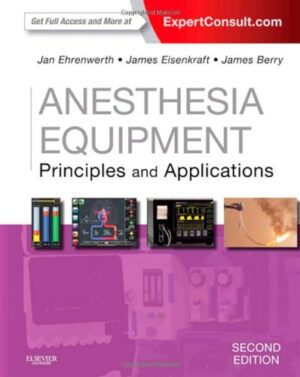Description
“Anesthesia in High-Risk Patients” is a specialized area of anesthesiology that focuses on the perioperative care of patients with an elevated risk of complications during surgery and anesthesia. High-risk patients often have complex medical conditions, significant comorbidities, or other factors that increase the likelihood of adverse events during their surgical procedures. Here’s an overview of what you can expect when dealing with anesthesia in high-risk patients:
- Patient Assessment:
- Thorough preoperative assessment is crucial in identifying high-risk patients. This assessment includes a detailed medical history, physical examination, and, in some cases, additional diagnostic tests.
- Risk Factors:
- High-risk patients can have various risk factors, including advanced age, multiple medical conditions (e.g., diabetes, heart disease), history of prior adverse surgical events, and a compromised immune system.
- Anesthetic Plan:
- Anesthesia providers must carefully tailor anesthetic plans to mitigate potential complications and ensure patient safety. This may involve the use of specific anesthetic techniques or medications.
- Multidisciplinary Collaboration:
- Collaboration with other specialists, such as surgeons, cardiologists, and intensivists, is essential to address the unique needs of high-risk patients.
- Informed Consent:
- High-risk patients must be informed about the potential risks and benefits of the proposed surgical procedure and anesthesia. Shared decision-making is crucial.
- Monitoring and Surveillance:
- Continuous monitoring during surgery is a key component of anesthesia for high-risk patients. This includes the close observation of vital signs and physiologic parameters.
- Intraoperative Management:
- Anesthesia providers may need to make real-time adjustments during surgery to address changes in the patient’s condition or respond to unforeseen events.
- Postoperative Care:
- High-risk patients often require specialized postoperative care and monitoring to manage complications and ensure a smooth recovery.
- Advanced Technologies:
- The use of advanced monitoring technologies, such as invasive hemodynamic monitoring, may be necessary for high-risk patients.
- Critical Care:
- Some high-risk patients may require postoperative care in an intensive care unit (ICU) to manage their complex medical needs.
- Optimization Strategies:
- In some cases, preoperative optimization strategies are employed to improve a patient’s condition before surgery, which can reduce the overall risk.
- Comprehensive Evaluation:
- High-risk patients often undergo comprehensive evaluations, which may include cardiology, pulmonary, and renal assessments to ensure their readiness for surgery.
Anesthesia in high-risk patients requires a specialized approach that balances the need for surgical intervention with the patient’s overall health and potential risks. Anesthesia providers in this field must have expertise in managing complex medical conditions, making critical decisions during surgery, and providing postoperative care that optimizes patient outcomes. Patient safety and well-being are paramount in anesthesia care for high-risk individuals.





Reviews
There are no reviews yet.